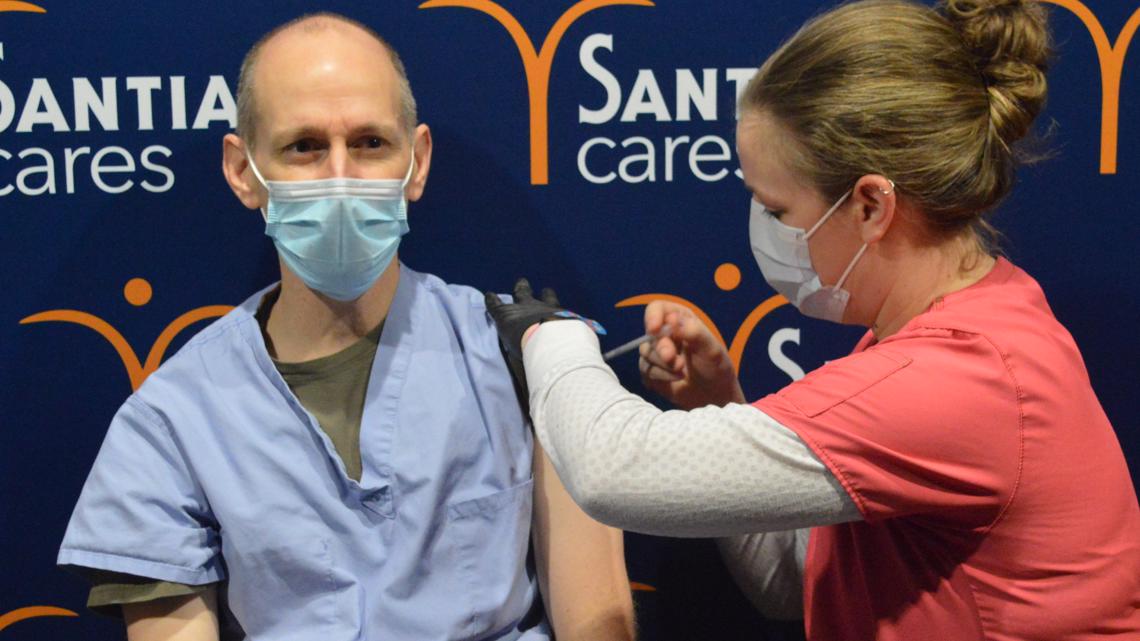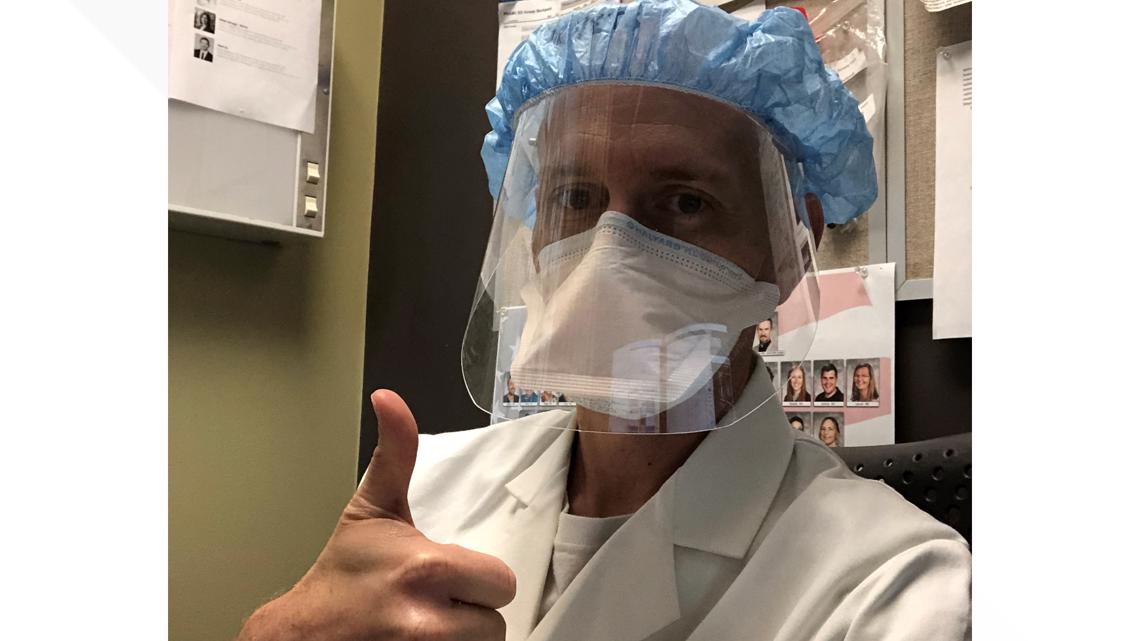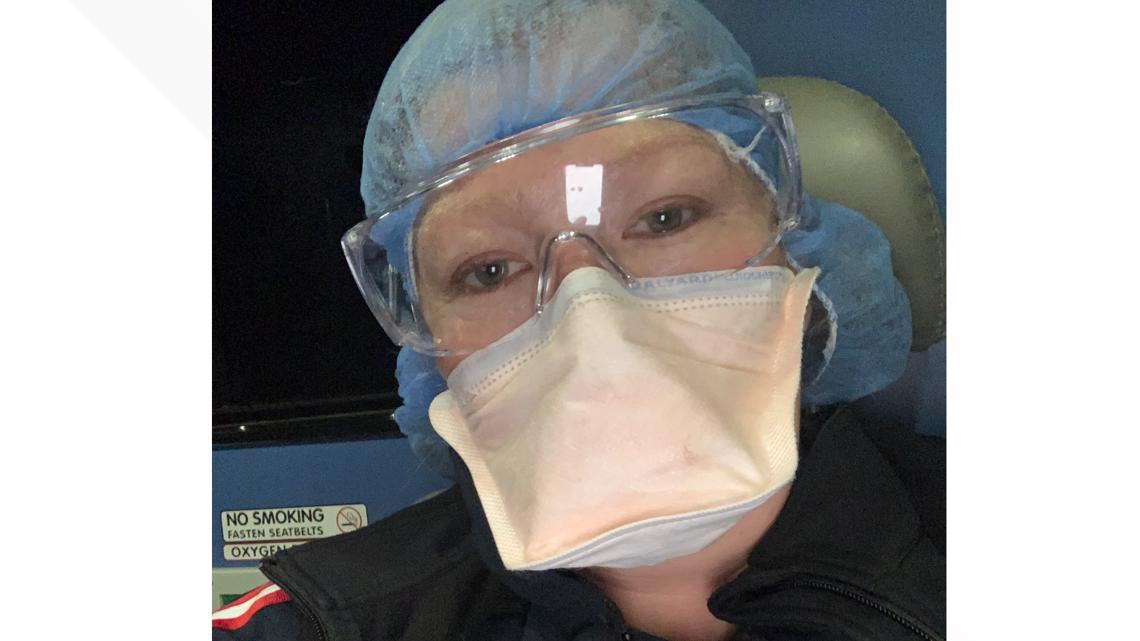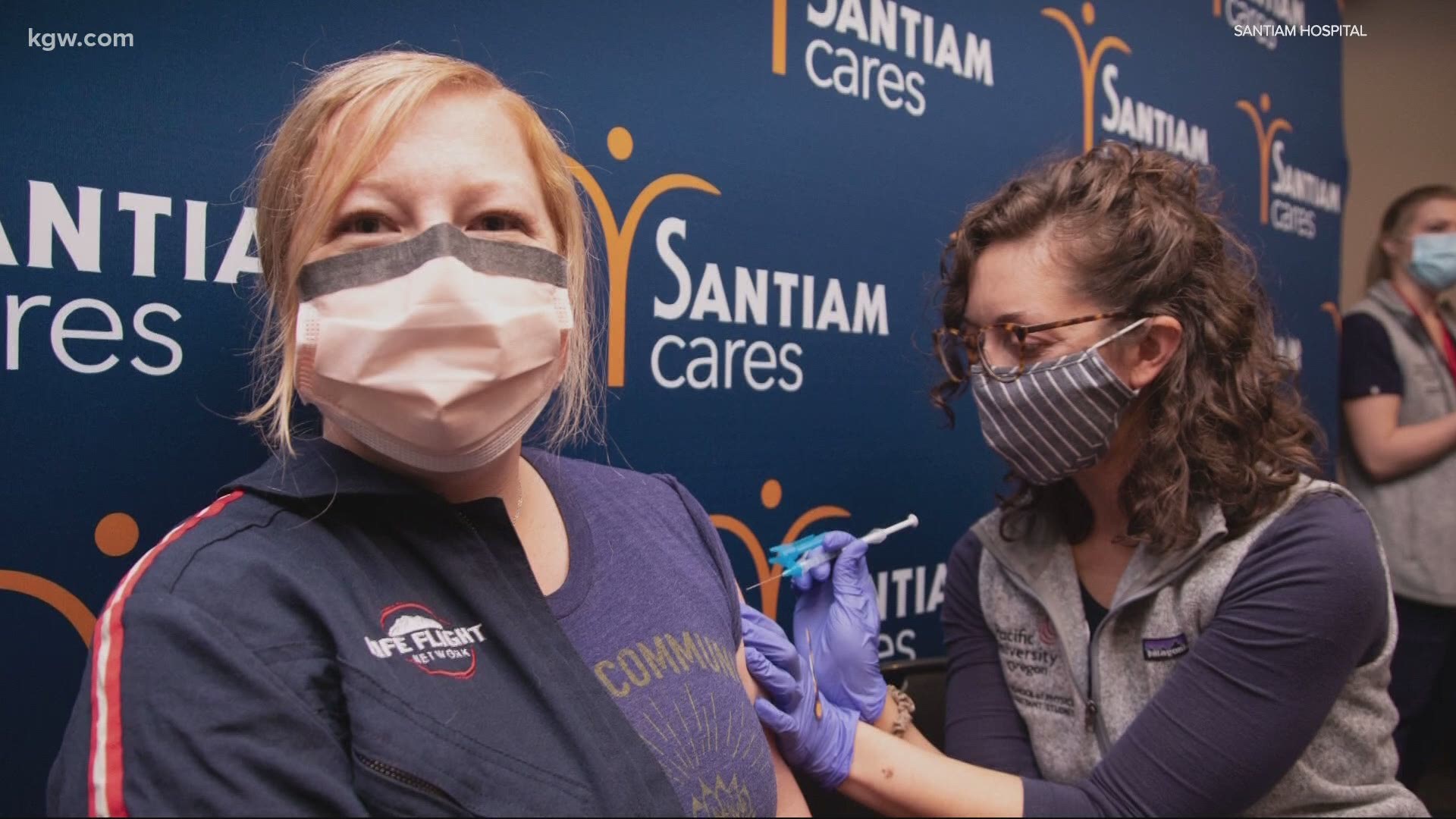STAYTON, Ore. — Santiam Hospital is helping ensure first-responders get their COVID-19 vaccines as quickly as possible.
Last week hospital officials say their employees began getting shots when the hospital received 3,600 Moderna COVID-19 vaccines. To their knowledge, they are the first hospital in Marion County to be an “Open Point of Distribution,” also known as an "Open POD."
That choice means not only do they have vaccines for their own staff, but they’re also able to distribute the vaccine to community members who qualify under the Oregon Health Authority's Phase 1a.
“Some of the definitions are a little broad and require some interpretation on our end, but 1a is clearly meant for health care workers and first responders. So, that’s who we’re working with at the moment,” said Dr. Steve Vets, Chief Medical Officer at Santiam Hospital.
This week, first responders and other health care workers were able to get vaccinated at Santiam Hospital. One of them was Hannah Sutton, a registered nurse for Life Flight and a mom to her 16-month-old girl named Lennon.
“I got the vaccine not just for my family but for the community, and because I really believe in the science behind it. I believe it’s safe and effective,” said Sutton.


She was able to get the vaccine because of her designation as a first responder and healthcare worker.
The OHA guidance for those who can get the vaccine under Phase 1a includes paid and unpaid health care workers who have the potential of coming in contact with COVID-19, as well as long-term care facility residents.
When it comes to who among those in Phase 1a gets the vaccine first, OHA has a proposed sequence that starts with Group 1. Below is a list of the people included in each group, according to an OHA document.
Who gets the vaccine first under Phase 1a
Group 1: includes hospitals, urgent care, skilled nursing and memory care facility health care providers as well as residents, tribal health programs, emergency medical services providers and other first responders.
Group 2: includes other long-term care facilities and congregate care sites including health care personnel and residents, hospice programs, mobile crisis care and related services, secure transport, and individuals working in a correctional setting.
Group 3: moves on to include people in outpatient settings serving specific high-risk groups, in-home care, day treatment services, and non-emergency medical transport.
Group 4: includes health care personnel in other outpatient, public health and early learning settings, as well as death care workers, like embalmers or coroners.
Other factors putting people at higher or lower risk are also considered when it comes to figuring out who might get priority in getting the vaccine.
At Santiam Hospital, the plan is to start with health care workers and first responders in the local community, then spread out from there.
“We will continue to expand as far as we need to and as long as we have the vaccine,” said Dr. Vets.
Vets received his vaccine last week, as did many of his coworkers.


“It’s the beginning of the end right? This is the thing we’ve been waiting for,” he said.
As of Tuesday, about 160 staff had received the vaccine. Vets said most people just experienced a sore arm, while a couple had migraine headaches and some had chills. Other than that, he said there were no other notable side effects.
“I am sitting here building antibodies as we speak and that is an exciting thing for me,” Vets said.


It’s also exciting for Sutton, who is looking forward to 2021.
“Very exciting and hopeful for us moving forward, and hopefully next year we can spend Thanksgiving with family and be able to do all the things we’ve had to limit this year,” said Sutton.
“Knowing that this can, not just help myself, but all of my patients, every life that we touch can be affected by this and it is so important for me to not just take care of my family as a mother and a person, but as a nurse, I really feel an obligation to the community,” she said.


Looking ahead to Santiam Hospital's COVID-19 vaccination plans
As of Wednesday, Santiam Hospital officials said they had administered 280 vaccinations total so far, with 500 people lined up over the next few days.
Vets said so far, staff has been able to do about 100 vaccinations per day. But as they get more experience doing it, the plan is to increase that number and eventually be able to administer shots offsite. Right now, he said they’re only giving vaccinations at the hospital to make sure they can oversee every step of the new process.
Maggie Hudson, President and CEO of Santiam Hospital said the goal is to begin administering 200 vaccinations per day starting next Monday.
For those who aren’t health care workers or first responders, the wait for a vaccine may stretch for months. But Dr. Vets said it’s important to keep wearing those face masks and social distancing.
He said unless someone has been working in a hospital or lives in a hard-hit area, it’s easy to not see how bad things really are.
But it’s thanks to the many people who are taking precautions that Oregon is not in a worse situation.
“I think most people have sacrificed and that sacrifice has paid off in that we have relatively benign conditions here. People need to continue to make those sacrifices for a few more months and hopefully, we will emerge in the Northwest relatively unscathed compared to other parts of the country,” said Vets.
“The most important thing is that the science is there. It’s safe and it’s effective and it’s better than the option of getting COVID-19,” Sutton said.

